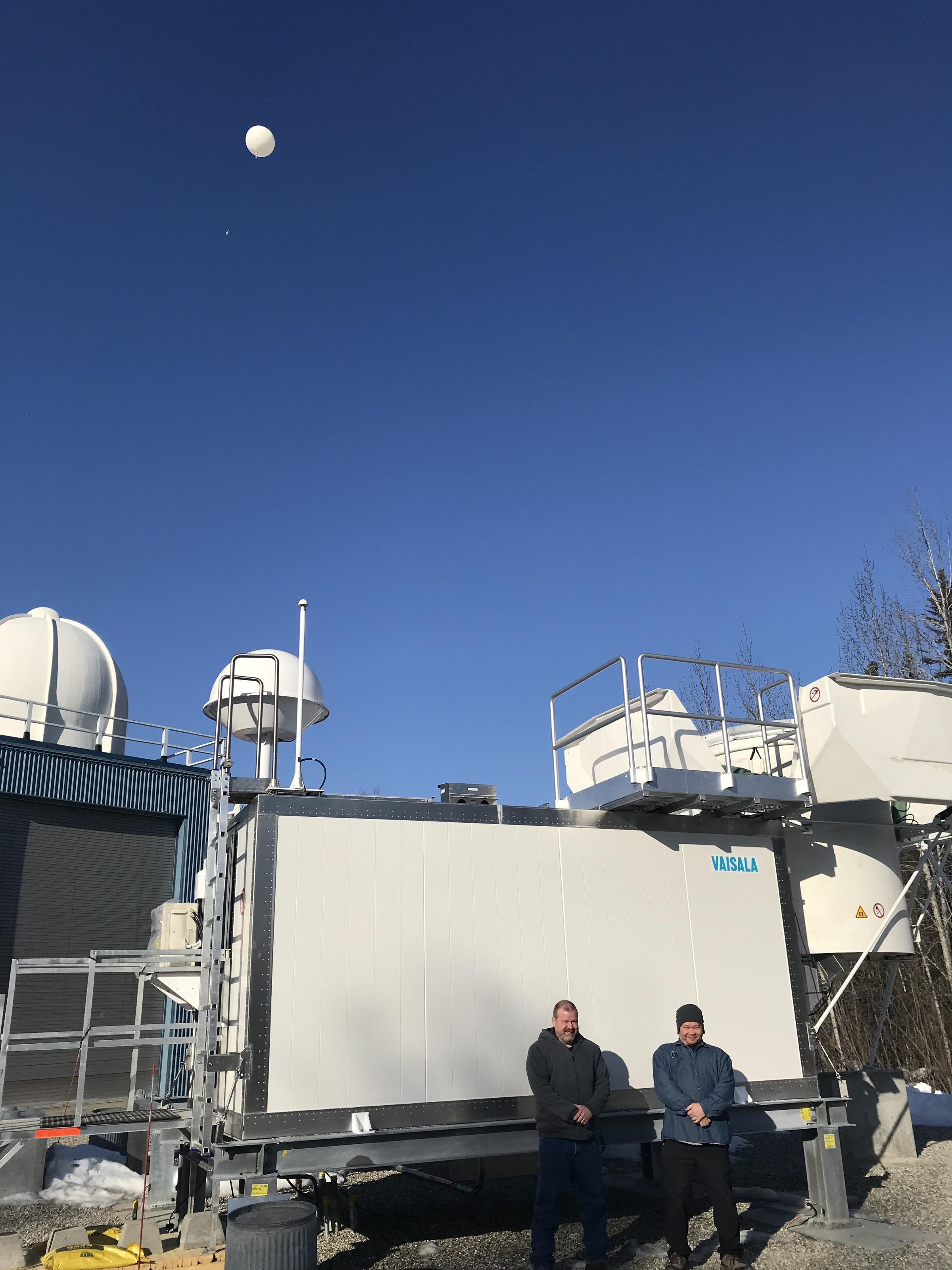
The National Weather Service is automating weather balloon launches in Alaska as part of a shift that will concentrate staff at the agencies urban forecast offices.
The National Weather Service’s first automated weather balloon launcher came on line in Kodiak last fall, and the second recently went into service in Fairbanks.
Outside what looks part RV, part Mars base, National Weather Service meteorologist Ed Plumb describes automated steps leading up to a balloon launch.
“This beeping starts about 15 minutes before the balloons can release, and this is indicating that there’s hydrogen now flowing and filling up the balloon,” Plumb said.
The $700,000 robot sits on a gravel pad near Fairbanks International Airport, the same location where twice daily launches have occurred for decades. The new automated launcher responds to the push of a button at the Weather Service’s Fairbanks headquarters five miles away, sparing staff from twice trips to manually deploy the atmospheric data gathering balloons. Plumb says meteorologists will use the freed up time to work more closely with government agency and industry customers.
”So the Weather Service has sorta shifted its paradigm. This is just a little piece where it gives us more time to do that sort of mission,” Plumb said.
“Our plan is to reinvest these positions and re-invest the people,” Weather Service regional director Carven Scott said.
Scott says positions eliminated by auto launchers at 11 rural Weather Service offices will shift to forecast stations in Fairbanks, Anchorage and Juneau.
“We will lose some capability, some operation capability, at these WSOs,” Scott said.
Jim Brader is a longtime agency meteorologist in Fairbanks, and Alaska chair of the National Weather Service Employees Organization, which takes issue with the automation and downsizing of rural Alaska offices.
”We basically are spending $17 million in Alaska to outsource 30 jobs across rural Alaska, where jobs are highly needed, and reducing services to rural Alaska too.”
The Weather Service’s Scott counters that the balloon launch technology needs upgrade and that it’s a struggle to staff the agency’s remote offices.
”It’s much easier to fill a position in Fairbanks, Juneau and Anchorage than it is in Kotzebue or McGrath,” Scott said.
Scott emphasizes that the Weather Service is not abandoning rural Alaska, and plans to keep one paid caretaker at each station, and train up a base of local volunteer observers.
”To help us have eyes in the villages, to report on a severe weather event,” Scott said.
Additional stations scheduled for downsize and transition to automated weather balloon launchers this summer include those at Annette Island, Yakutat, Utqiagvik, St. Paul and Bethel. Alaska’s six other stations will convert the following year.
Dan Bross is a reporter at KUAC in Fairbanks.




